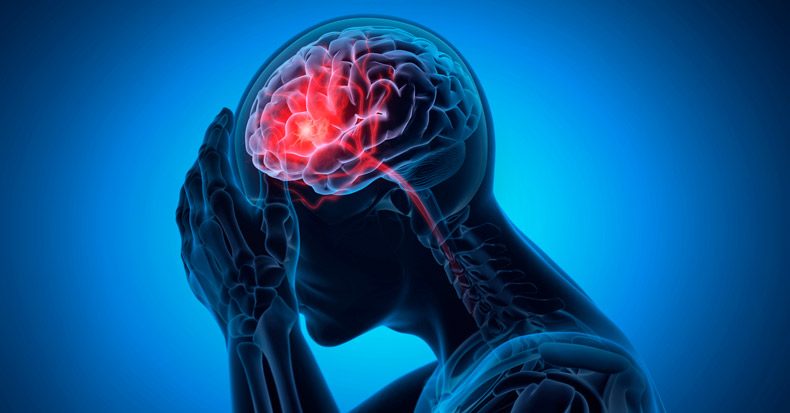Carpal tunnel syndrome (CTS) is a common condition caused by compression of the median nerve as it passes through the carpal tunnel in the wrist. This can lead to pain, numbness, tingling, and eventually weakness in the hand, particularly affecting the thumb, index finger, middle finger, and the thumb-side of the ring finger. In mild-to-moderate […]
Non-Surgical Management of Frozen Shoulder
Adhesive capsulitis, commonly known as frozen shoulder, is a condition characterized by painful and restricted shoulder movement. It affects approximately 2-5% of the United States population, most frequently in adults aged 40 to 60. The condition develops gradually, beginning with a “freezing” phase in which movement becomes increasingly painful and limited. This stage can last […]
When Headaches Arise from the Neck
Cervicogenic headache is a secondary type of headache resulting from dysfunction in the neck region. Currently, the prevailing theory in research on how this form of headache occurs is that mechanical problems—such as sprains or strains, disc herniations, or degenerative arthritis—irritate one or more of the upper cervical spinal nerves (typically C1–C3), and this irritation […]
The Boundary Between Whiplash and Concussion
Whiplash associated disorders (WAD) is a term used to describe the constellation of symptoms resulting from the sudden acceleration and deceleration of the head, most commonly during motor vehicle collisions. This can include physical symptoms like neck pain and stiffness; pain that gets worse with neck movement; loss of neck motion; headaches that start at […]
Try Pickleball!
Chiropractors and other healthcare providers often encourage patients to sit less and move more, as an active lifestyle not only reduces the risk of early death and chronic disease but also helps seniors maintain their independence longer. Many aging adults are drawn to accessible forms of physical activity such as yoga, golf, Pilates, tai chi, […]
Low Back Pain and the Thoracolumbar Fascia
It’s estimated that approximately 7.5% of the global population experiences at least one episode of low back pain each year, contributing significantly to healthcare costs and lost productivity. Most cases of low back pain are classified as non-specific, meaning there is no identifiable underlying pathology such as an infection, tumor, osteoporosis, or inflammatory disorder. Rather, […]
Explaining the Chiropractic Adjustment
Comparing and Contrasting the Audible (“Pop, Crack”) to the Non-Audible Adjustment And Clinical Outcomes Chiropractic care does not involve drugs or surgery. Chiropractic care centers around the application of mechanical forces to a patient’s body, and primarily to their spine. Untrained lay practitioners who apply mechanical forces to a patient’s body call such a maneuver […]
A Common Cause of Kneecap Pain
Patellofemoral pain syndrome (PFPS) is characterized by pain in the front region of the knee, around the patella (kneecap), and is often described as stabbing, aching, and/or burning—especially during movements that increase pressure between the femur and patella. Common aggravating activities include prolonged sitting, transitioning from sitting to standing, climbing or descending stairs, kneeling, squatting, […]
X-Rays for Seniors with Chronic Low Back Pain
Chronic low back pain is a common condition that becomes even more prevalent with age. By some estimates, it may affect nearly 3 in 4 older adults each year. As individuals aged 65 and older continue to make up a growing share of the global population, chronic low back pain will remain a significant healthcare […]
Truck Driving and Carpal Tunnel Syndrome
When we think of carpal tunnel syndrome, we often picture people whose jobs or leisure activities involve rapid hand movements—like typing, playing an instrument, or line work; heavy tool usage—like construction work; or prolonged time spent in awkward hand positions—like dentists and surgeons. One profession we don’t typically consider is professional drivers, especially those behind […]
- « Previous Page
- 1
- …
- 4
- 5
- 6
- 7
- 8
- …
- 156
- Next Page »









